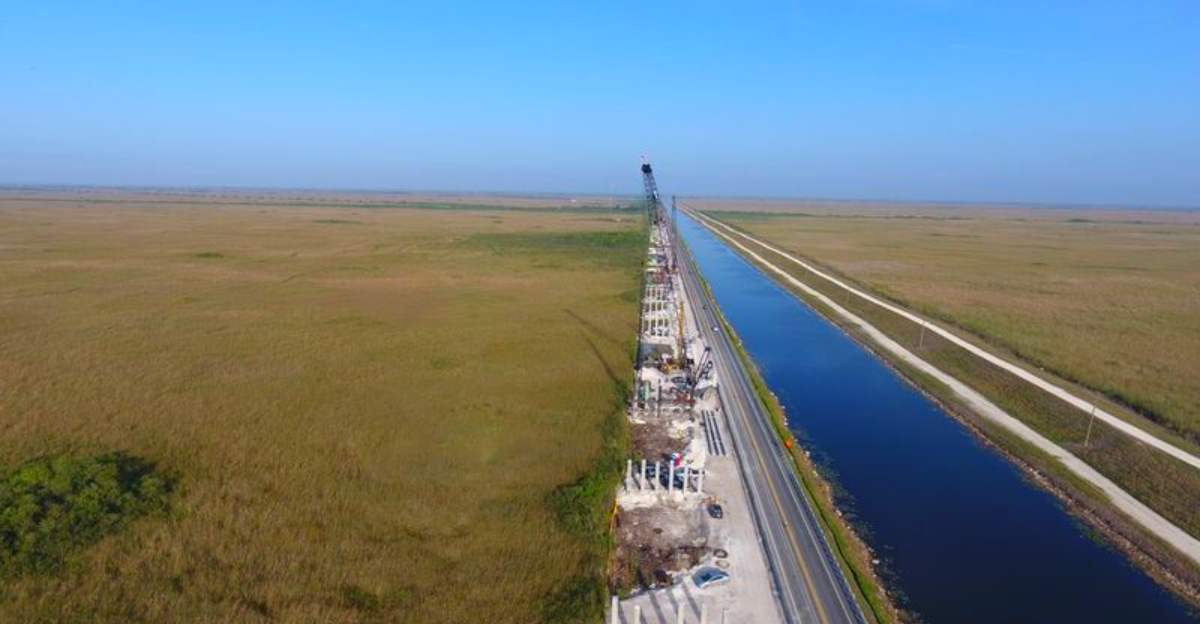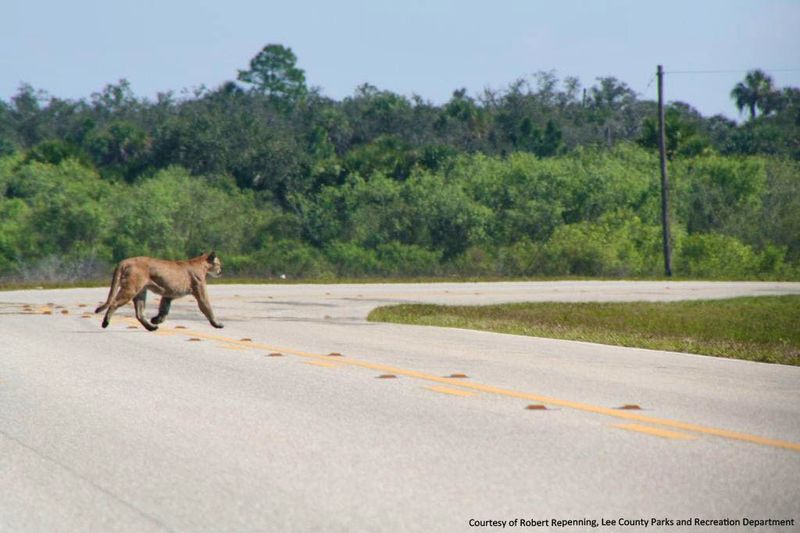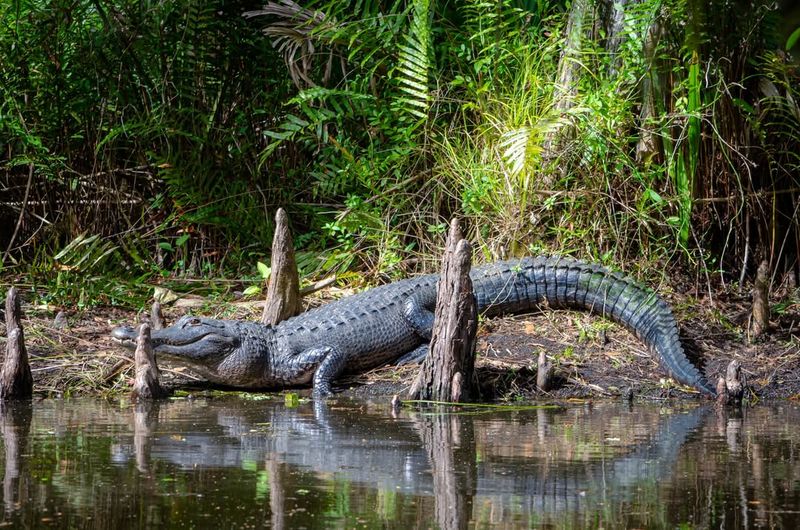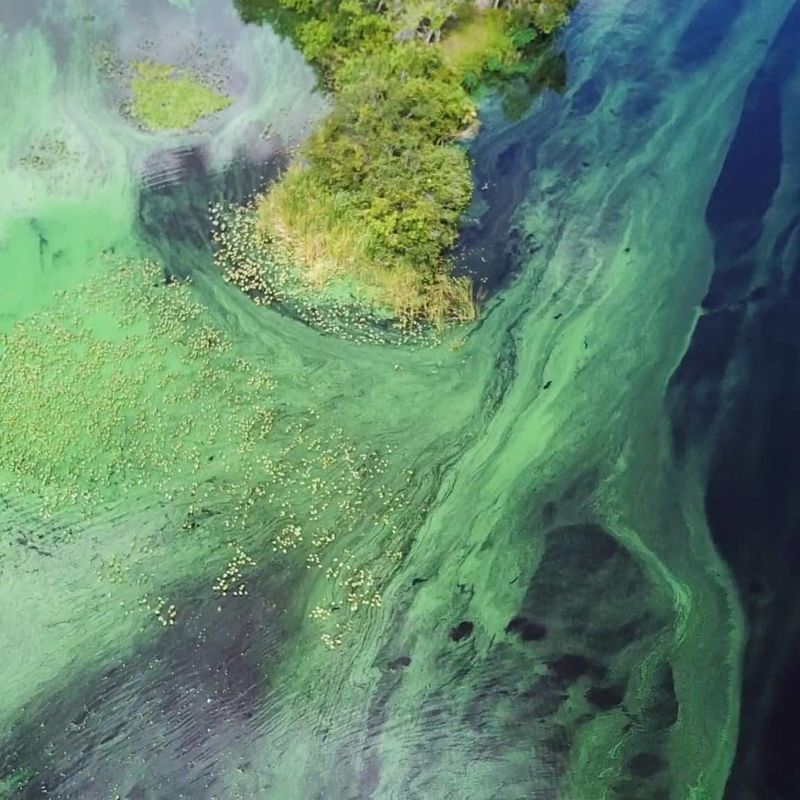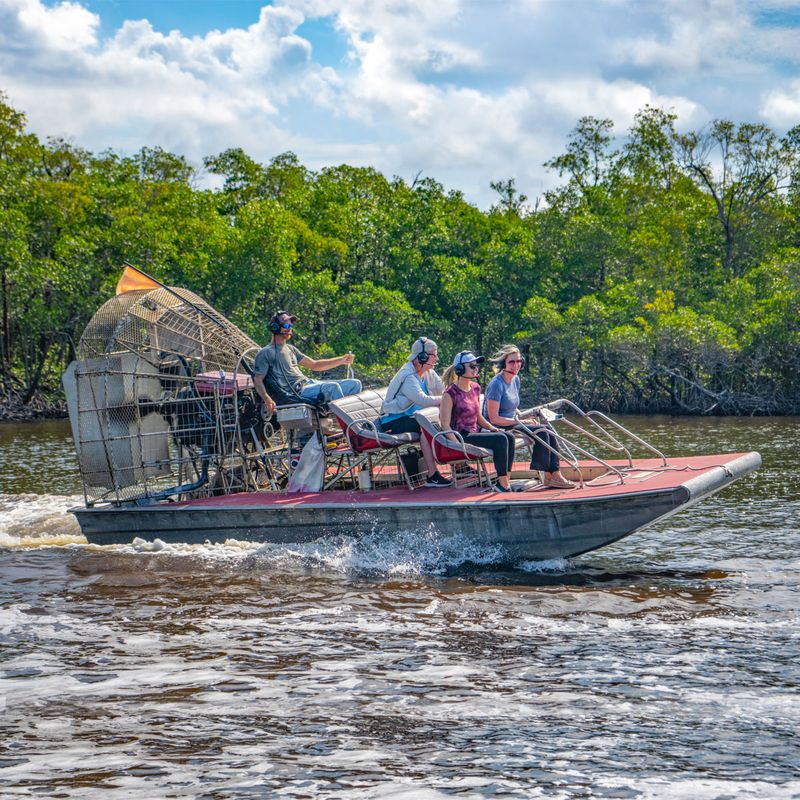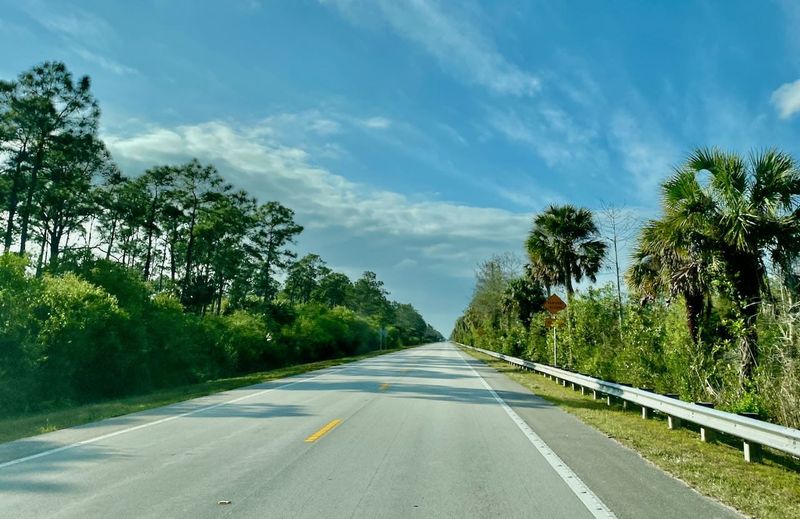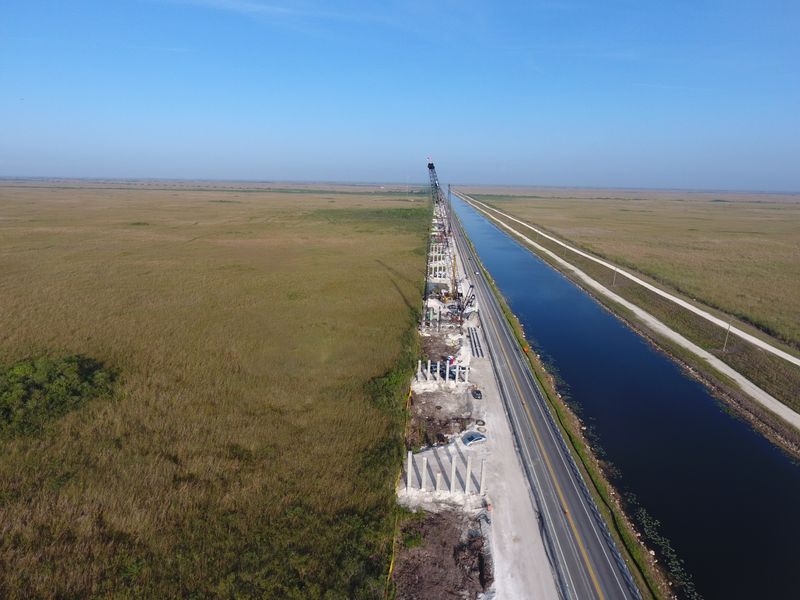The Tamiami Trail is more than just a highway connecting two Florida cities. It is a gateway to the Everglades, one of the most unique and vital wetlands on our planet. As you cruise along this historic road, you are surrounded by rare wildlife, shifting landscapes, and a story of conservation that continues today.
1. The Tamiami Trail Was Completed in 1928
Construction began in 1915 and took more than a decade to finish. Workers faced brutal conditions, battling swamps, mosquitoes, and alligators to carve a path through the wilderness. The project was a massive engineering feat for its time.
It was the first road to connect Tampa and Miami, giving the route its name: Ta (Tampa) + Miami = Tamiami. Before this highway existed, traveling between these two cities meant a long detour or a boat ride. The completion of the trail opened up South Florida in ways no one had imagined, bringing trade, tourism, and new communities to the region.
2. It Cuts Directly Through Everglades National Park
Unlike most national parks that are surrounded by highways, this road runs straight through the ecosystem itself. As you drive, the Everglades unfold on both sides with sawgrass prairies, cypress stands, and endless water stretching to the horizon. You are literally inside one of the most important natural areas in the world.
The experience feels surreal because nature is everywhere you look. Birds glide over the marshes, and the landscape changes with every mile. Driving through the park gives you a front-row seat to an ecosystem that supports countless species and plays a critical role in Florida’s water supply.
3. The Highway Crosses the Natural Habitat of the Florida Panther
The once nearly extinct Florida panther still roams this region. These big cats are extremely rare, with fewer than 200 left in the wild. Special wildlife underpasses and warning signs along the road were added to reduce vehicle collisions, one of the panther’s biggest threats.
Drivers are urged to stay alert, especially at dawn and dusk when panthers are most active. Spotting one is incredibly rare, but knowing you are sharing the road with such a majestic creature adds a sense of wonder to the journey. Conservation efforts continue to protect their shrinking territory and ensure their survival.
4. The Everglades Is the Only Place on Earth Where Alligators and Crocodiles Coexist
On this drive, you are traveling through the only ecosystem in the world where both the American alligator and the American crocodile live naturally in the wild. Alligators prefer freshwater, while crocodiles thrive in saltwater and brackish areas. The Everglades offers both, making it the perfect meeting ground.
You can tell them apart by their snouts: alligators have wide, rounded ones, while crocodiles have narrow, pointed snouts. Seeing either species from the roadside is common, especially near canals and water channels. This unique overlap makes the Everglades a hotspot for reptile enthusiasts and scientists alike.
5. It Once Altered Water Flow and Now Restoration Efforts Are Reversing That
When the Tamiami Trail was built, it blocked natural water movement across the wetland. The road acted like a dam, disrupting the slow, sheet-like flow that defines the Everglades ecosystem. This caused serious environmental damage over the decades.
Today, multi-billion-dollar elevated bridges are being installed to allow water to flow more freely again and restore the Everglades’ natural hydrology. Engineers are literally lifting sections of the highway to let the water pass underneath. These restoration projects are some of the largest environmental efforts in U.S. history, aiming to heal the damage done nearly a century ago.
6. The Road Borders Tribal Lands
Portions of the drive pass through Miccosukee and Seminole Tribal territories. These indigenous communities have lived in harmony with the Everglades for generations, maintaining deep cultural and spiritual connections to the land. Visitors can stop at tribal villages, cultural centers, and restaurants that are locally run.
Many of these stops offer authentic experiences, including traditional crafts, storytelling, and cuisine. Supporting these businesses directly benefits the tribal communities who continue to be stewards of the Everglades. Their knowledge and traditions are woven into the landscape, making the journey not just ecological but deeply cultural as well.
7. Everglades Wildlife Is Visible Right From the Road
From roadside canals and marshes, it is common to spot alligators, wading birds like great egrets, roseate spoonbills, and herons, turtles, and sometimes even manatees in connected waterways. This highway is essentially one long wildlife viewing corridor.
You do not need to hike deep into the wilderness to experience nature here. Just pull over at designated spots, and you will likely see something amazing within minutes. Birdwatchers especially love this route because the diversity of species is incredible. Bring binoculars and a camera, and you will leave with unforgettable memories and photos of Florida’s wild side.
8. The Landscape Changes Dramatically Along the Route
The scenery shifts as you go. Shallow sawgrass plains near Miami give way to cypress domes and swamp forests in the central region. As you move west toward Naples, pine rocklands and mangroves appear, creating a completely different atmosphere.
It is a living cross-section of the Everglades ecosystem. Each zone supports different plants, animals, and water conditions. Watching the environment transform before your eyes makes the drive feel like a nature documentary unfolding in real time. Every mile offers something new, which is why many travelers take hours to complete what could be a quick trip.
9. It Is One of the Best Places in Florida for Airboat Tours
Airboat operators along the trail have launched Everglades rides here for decades, offering a traditional way to explore the River of Grass. Many are Miccosukee-owned, adding cultural authenticity to the experience. These flat-bottomed boats skim across shallow water at high speeds, powered by massive propellers.
Riding an airboat is thrilling and gives you access to areas you cannot reach by car or on foot. Guides often share stories about the ecosystem, point out wildlife, and explain the history of the region. If you want to truly feel the pulse of the Everglades, an airboat tour is a must-do adventure.
10. The Trail Is Part of a UNESCO World Heritage Site
Because the Everglades is globally significant for biodiversity and water systems, the region surrounding the trail is recognized as a UNESCO World Heritage Site. This designation places it alongside other world treasures like the Great Barrier Reef and the Galapagos Islands. It acknowledges the Everglades as irreplaceable.
The recognition also brings international attention to conservation efforts. Scientists from around the globe study this ecosystem to understand wetland health, climate change impacts, and species survival. Driving the Tamiami Trail means you are passing through a landscape that matters not just to Florida, but to the entire planet.
11. A Scenic Drive That Can Be Done in Two Hours
The Tamiami Trail drive between Miami and Naples is roughly 80 miles and can be done in around two hours, though most travelers make multiple stops to explore. The route is straightforward, mostly flat, and well-maintained, making it accessible for all types of vehicles.
But rushing through would be a mistake. There are observation points, boardwalks, visitor centers, and wildlife viewing areas scattered along the way. Pack snacks, water, and a sense of curiosity. Whether you are a local or a visitor, this is one of those drives where the journey truly is the destination. Take your time and soak it all in.
12. The Road Remains a Symbol of Florida’s Human Nature Balancing Act
The Tamiami Trail represents the ongoing challenge of preserving one of the world’s most important wetlands while still allowing people to experience it. Building the road brought progress but also environmental harm. Now, fixing that damage requires cooperation, funding, and innovation.
Today, scientists, conservation groups, and tribal nations continue to work together to protect the Everglades for the future. The road is a reminder that humans and nature must coexist thoughtfully. Every bridge raised, every panther crossing built, and every restoration project completed is a step toward balance. The Tamiami Trail is both a scar and a solution.
